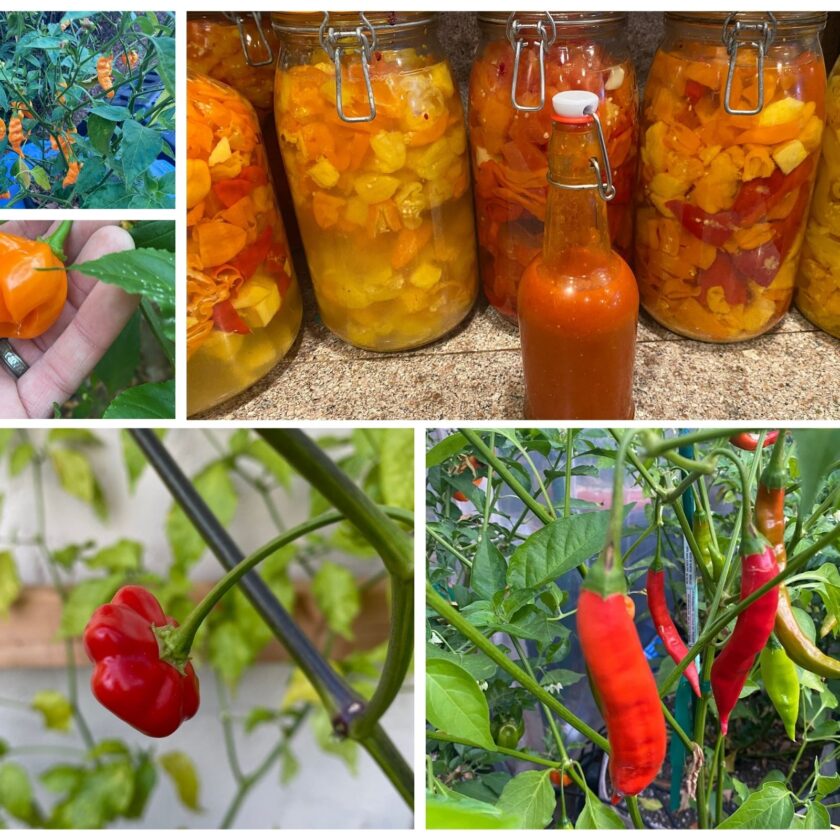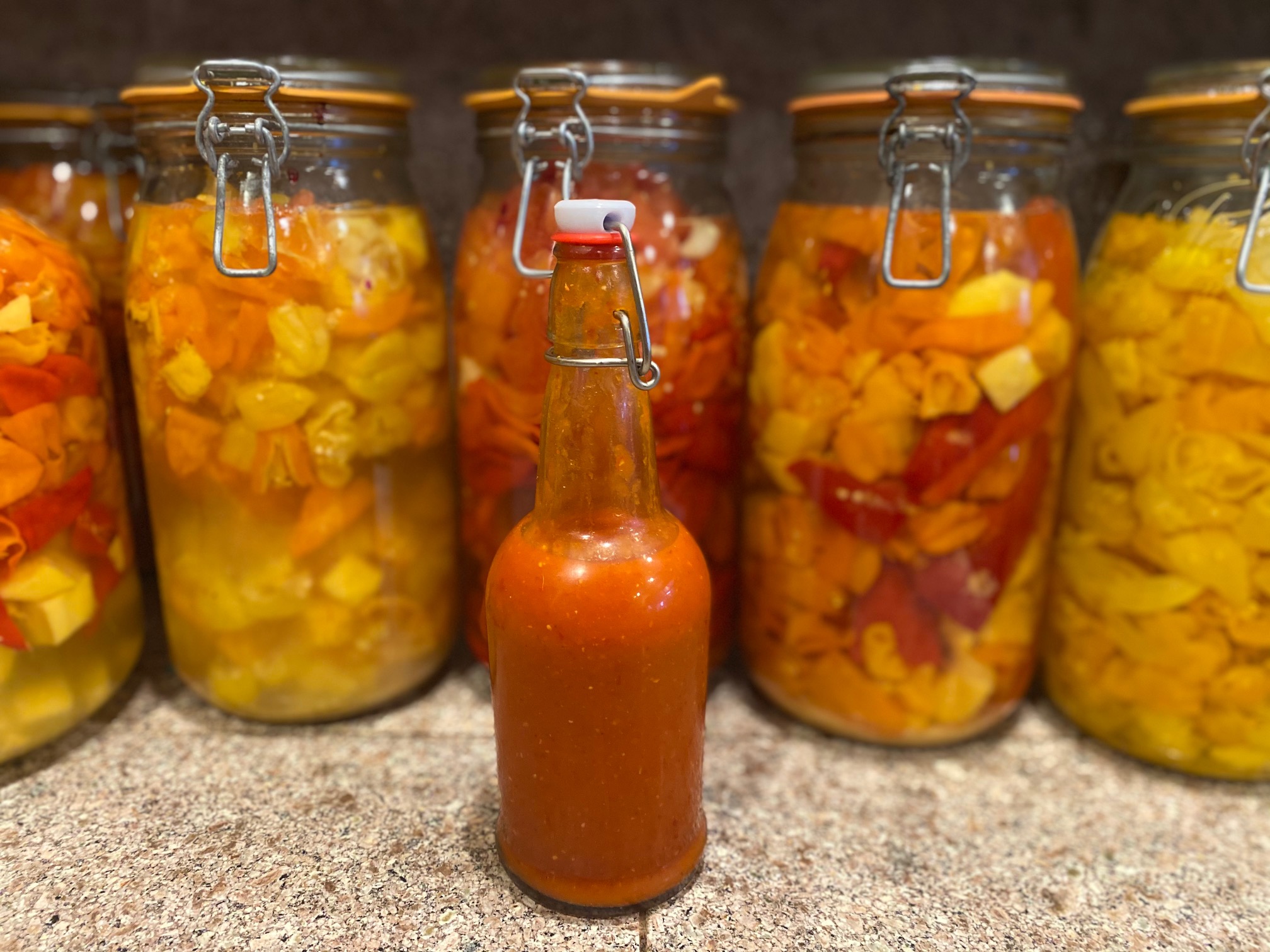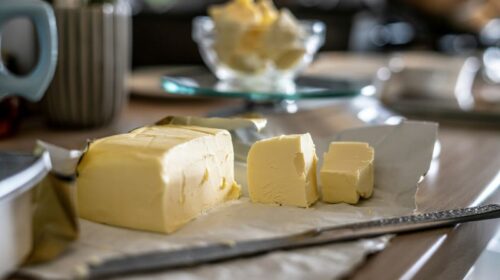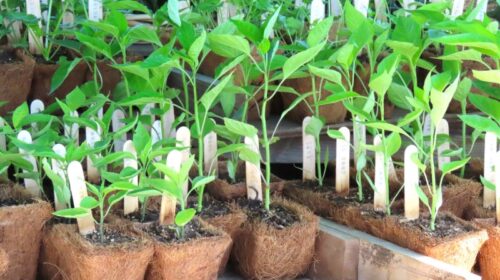Spicy Goodness
Mountain Fermenter
By Mike De Smidt and Greg Roe
Fermented foods have a long history in many cultures and cuisines. Some of the more well known and favorite fermented items are the ones that we drink and make us feel funny, but there are a plethora of other fermented beverages and food items out there. Simply put, fermentation is a chemical process through which yeast or bacteria transform various compounds they use for food into byproducts, and in the right environments, those byproducts manifest themselves as wild new flavors, alcohols, and acids that can make food products more shelf stable.
One of my favorite ways of venturing into fermentation is through my pepper garden. Here, I will walk you through how I turn a bunch of fresh peppers and frozen fruit into delicious hot sauce. I start with gathering the ingredients: chili peppers (you know your tolerance for heat better than anyone, so choose your own adventure), salt, water, garlic, and frozen fruit chunks (I like mango or pineapple).
Before you begin, make sure you have a properly-sized fermentation vessel. I like to use flip-top glass jars with the rubber gaskets. However, mason jars with lids that accept airlocks work great. Use your preferred method to clean and sanitize the inside of the jar.

No matter what peppers you use, if jalapeño or hotter, wear gloves and refrain from touching your face or any other sensitive area while handling the chilis. Ask me how I know.
Prepare the peppers by cutting the tops off and slicing into halves lengthwise. Add to your fermentation vessel until roughly ½ to ⅔ full. Next, coarsely chop or press garlic into the vessel. Last, add the fruit chunks.
To keep air out and to provide a medium for the good yeast and bacteria to work their magic, you will now need to make and add a brine. This is very simple, if you use the metric system. Since 1 liter is close enough to a quart, you can get by using imperial measuring tools. Here’s the target; you want to aim for a 3% saline brine, which, in 1 liter of water, equals an addition of 30 grams of salt. If you don’t have a scale, 30 grams of salt is just shy of 2 Tablespoons. Thoroughly mix the salt until fully dissolved and then add to your fermentation vessel. Repeat, if necessary until the vessel is close to full. Shake the vessel around a bit to get rid of air bubbles and top up as needed.
Place the sealed vessel in a cool spot out of sunlight for 2 to 3 weeks. If you use a flip-top jar, the first several days can be fairly active, and you may need to crack the lid to “burp” the CO2 that is a byproduct of the fermentation. This will also give you an opportunity to use your best food quality detection tool (your nose) to determine how the fermentation is doing. For example, if it smells like rotting food, something went horribly wrong.
NOTE: There is the possibility that unwanted food spoiling bacteria can infiltrate a fermentation. You will usually be able to smell if this is the case. Do not try to eat anything that smells bad as it may be harmful. Throw it out and try again. If kept sanitary and properly controlled, the fermentation itself creates an inhospitable environment for those bad guys.
Once the fermentation has stopped producing CO2 and you have bottles on hand and sanitized, you can move on to making the sauce. Use a blender, a big pot, food thermometer, and some xanthan gum – a thickening agent that also keeps things from separating over time. Add the fermented mix into the blender, blend until smooth, and add to the pot. When all of the sauce is in the pot, slowly heat while stirring, add about ½ tsp of xanthan gum and mix thoroughly until the sauce reaches 165F. Hold at this temperature for 10 minutes. You can continue to let it simmer until it reaches the desired thickness.
Finally, add the sauce to clean and sanitized bottles and it should last a good long while on the shelf at room temperature. Bottles of homemade hot sauce make excellent gifts.
Ben Lomond local, Mike De Smidt has been home brewing for 12 years and is a BJCP Certified Beer Judge.
Greg Roe is a Felton local who has been a home brewer for 20 years and is a self-proclaimed Fermentation Geek.




